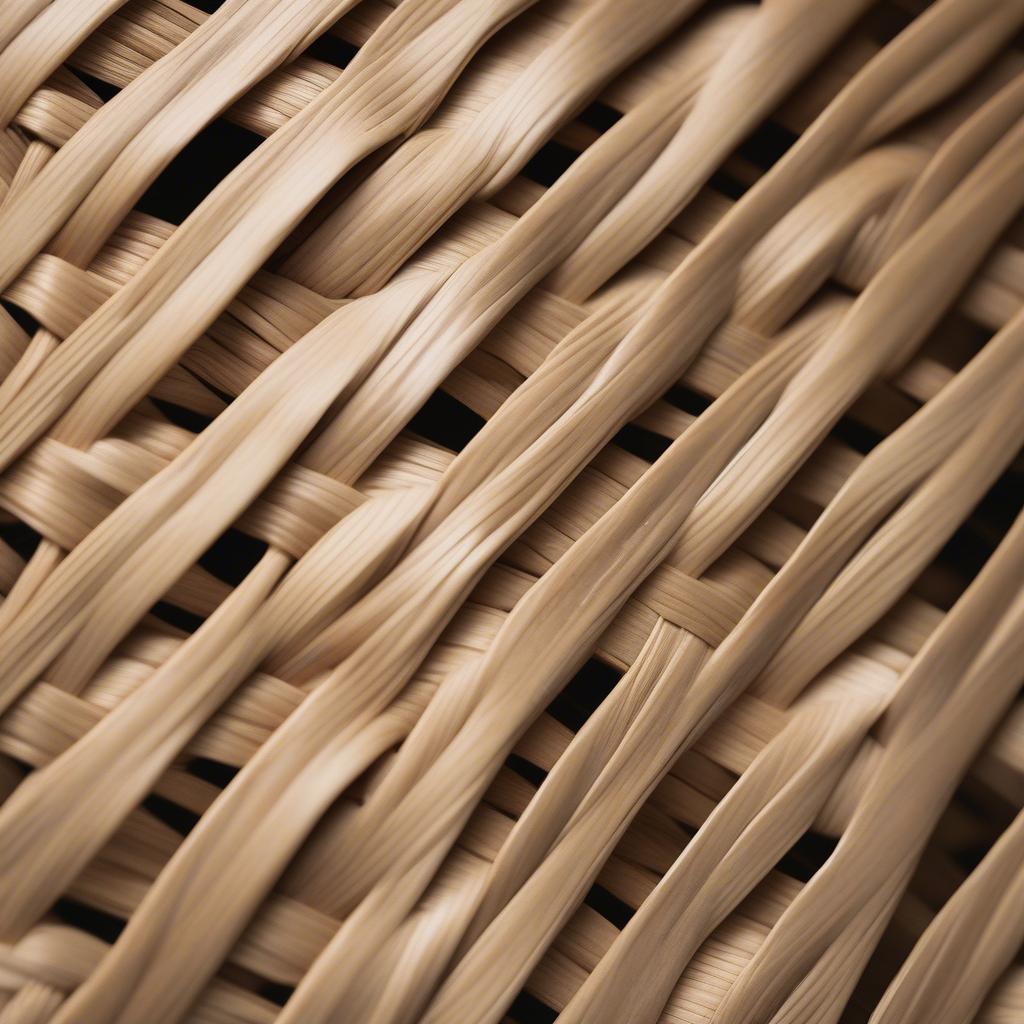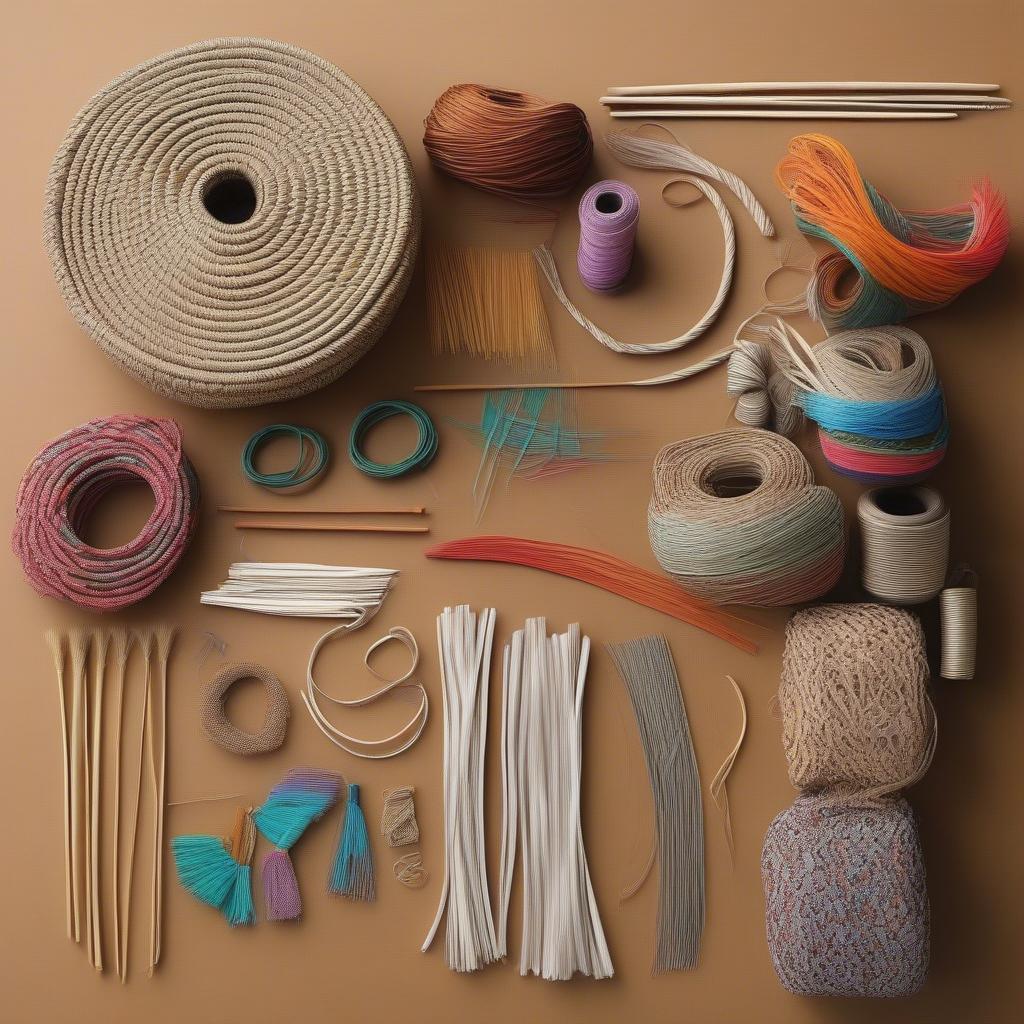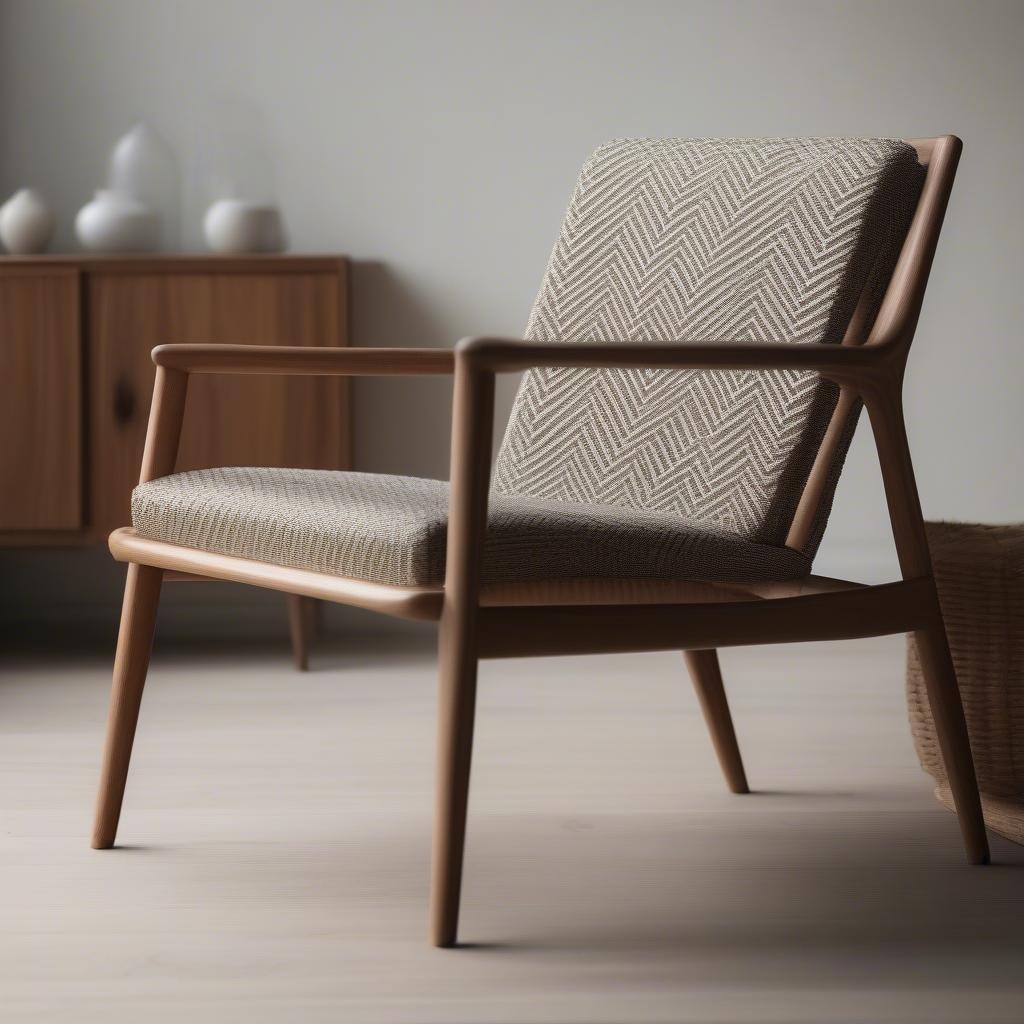Weave Chair
Mastering the Herringbone Chair Weave: A Comprehensive Guide
The Herringbone Chair Weave, a classic and visually appealing pattern, is a popular choice for chair seats and backs. This intricate design adds a touch of elegance and sophistication to any piece of furniture. Whether you’re a seasoned weaver or just starting out, this guide will explore everything you need to know about the herringbone chair weave, from its history and variations to practical tips and techniques.  Close-up view of a herringbone chair weave pattern, showcasing the intricate details and craftsmanship.
Close-up view of a herringbone chair weave pattern, showcasing the intricate details and craftsmanship.
Understanding the Herringbone Pattern
The herringbone pattern is characterized by its distinctive V-shaped design, resembling the skeleton of a herring fish – hence the name. This pattern is achieved by weaving the material in a staggered, interlocking manner, creating a strong and durable surface. The herringbone weave isn’t just limited to chair seats; it’s used in various crafts, from basketry and textiles to even flooring and bricklaying. This widespread use speaks volumes about its versatility and enduring appeal.
What makes the herringbone chair weave so appealing? It’s the combination of durability and aesthetic charm. The interlocking weave provides exceptional strength, making it perfect for frequently used furniture. At the same time, the pattern adds a touch of visual interest, elevating the overall look of the chair.
Choosing the Right Material for Your Herringbone Weave
The choice of material greatly influences the final look and feel of your herringbone chair weave. Common materials include rattan, wicker, paper cord, and even paracord. replacement herringbone weave fabric for lawn chair Each material offers unique properties and advantages. Rattan and wicker provide a natural, organic aesthetic, while paper cord offers a smooth, contemporary finish. Paracord is a durable and versatile option, ideal for outdoor furniture.
Considering the intended use of the chair is crucial when selecting your material. For indoor chairs, rattan, wicker, or paper cord are excellent choices. For outdoor use, weather-resistant materials like paracord or synthetic rattan are recommended.
 Samples of rattan, wicker, paper cord, and paracord, suitable for herringbone weaving.
Samples of rattan, wicker, paper cord, and paracord, suitable for herringbone weaving.
How to Weave a Herringbone Chair Seat: A Step-by-Step Guide
Learning the herringbone weave can seem daunting at first, but with practice, it becomes a rewarding and enjoyable process. how to weave a herringbone chair seat Here’s a simplified guide to get you started:
- Prepare your frame: Ensure the frame is sturdy and clean.
- Measure and cut your material: Allow for extra length to account for the weaving process.
- Start the weave: Begin by anchoring the material to the frame.
- Create the herringbone pattern: Follow a diagonal weaving pattern, over and under, to create the characteristic V-shapes. weave a chair seat with cane in herringbone pattern
- Maintain consistent tension: This is key to a neat and even finish.
- Secure the ends: Tuck in the loose ends neatly.
Practice is essential. Start with a small project, like a coaster or a small basket, to get comfortable with the technique before tackling a chair seat.
Herringbone Chair Weave Variations
The basic herringbone pattern can be adapted and modified to create a variety of stunning designs. You can experiment with different colors, material thicknesses, and even incorporate other weaving techniques to personalize your projects. herringbone weave chair seat with paracordrope From a simple double herringbone to more complex variations, the possibilities are endless.
Caring for Your Herringbone Weave
Proper care ensures your herringbone chair weave lasts for years. Regular dusting and occasional wiping with a damp cloth are usually sufficient. how to weave herringbone paper cord chair Avoid exposing the weave to excessive moisture or direct sunlight.
“A well-maintained herringbone weave not only retains its beauty but also its structural integrity,” says Emily Carter, a renowned furniture restorer and weaving expert. “Regular care can significantly extend the lifespan of your woven furniture.”
 A completed chair with a herringbone woven seat.
A completed chair with a herringbone woven seat.
Conclusion
The herringbone chair weave is a testament to the artistry and durability of traditional weaving techniques. Whether you’re restoring a vintage chair or creating a new piece, this timeless pattern adds a touch of elegance and sophistication. By understanding the techniques and choosing the right materials, you can create beautiful and long-lasting herringbone weaves for your furniture projects.
FAQ
- What is the best material for a beginner to use for herringbone weaving?
- How do I fix a broken strand in my herringbone weave?
- Can I use the herringbone weave for other projects besides chair seats?
- What is the difference between a single and double herringbone weave?
- How do I clean a herringbone woven chair seat?
- What tools do I need for herringbone weaving?
- Where can I find more herringbone weave patterns?
Need assistance? Contact our 24/7 customer service team at +84 388 951 999, located in Hanoi, Vietnam or Tech Avenue, Suite 12, San Francisco, CA 94105, USA.
